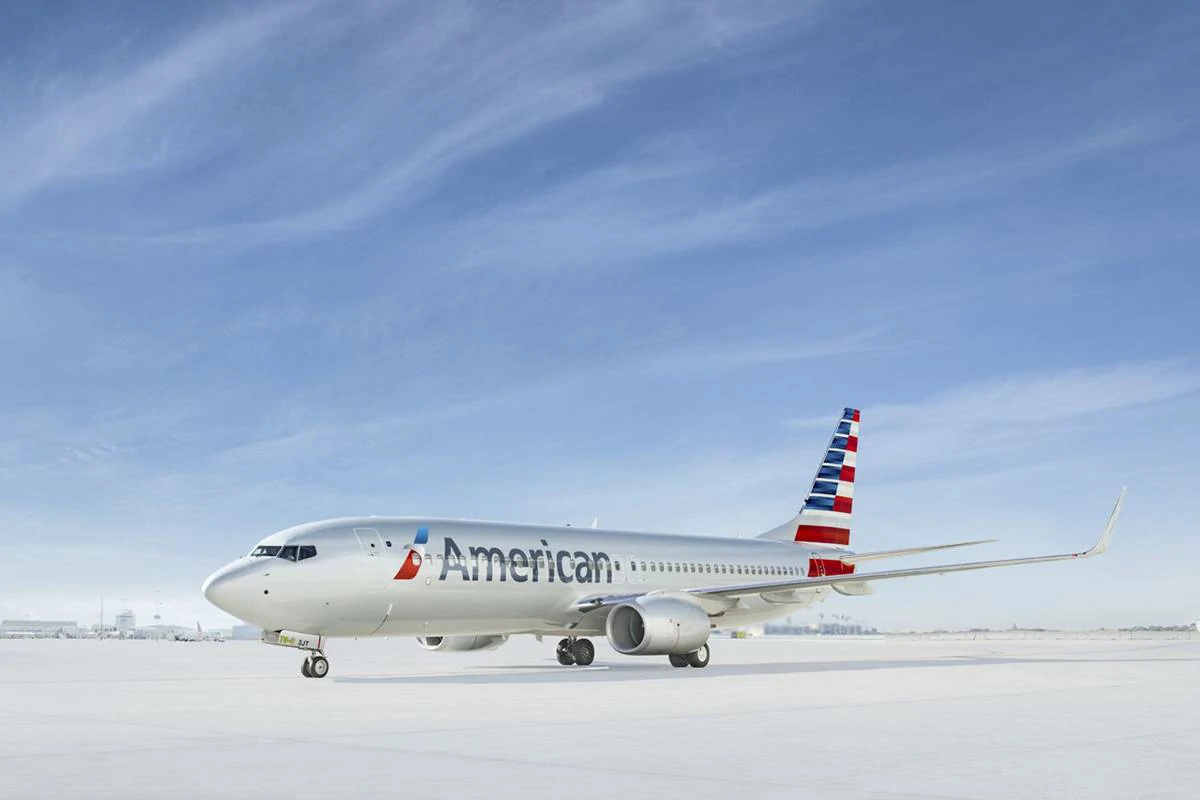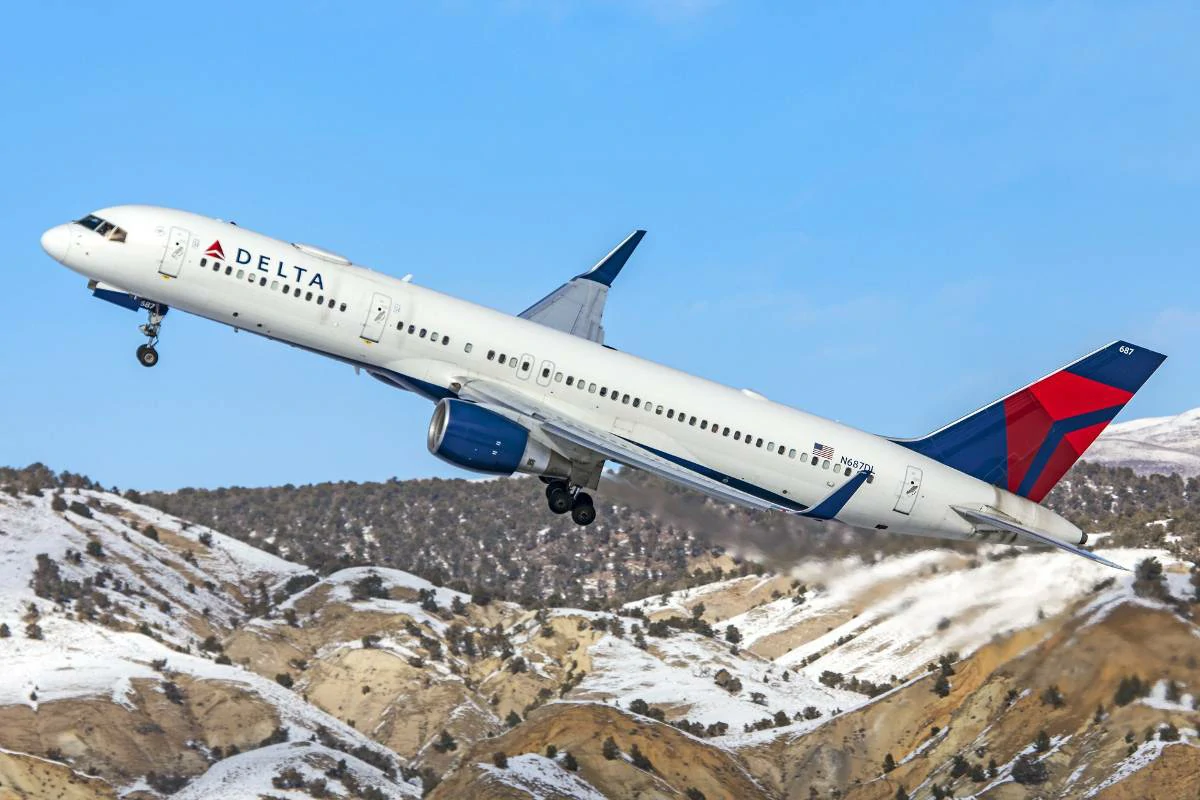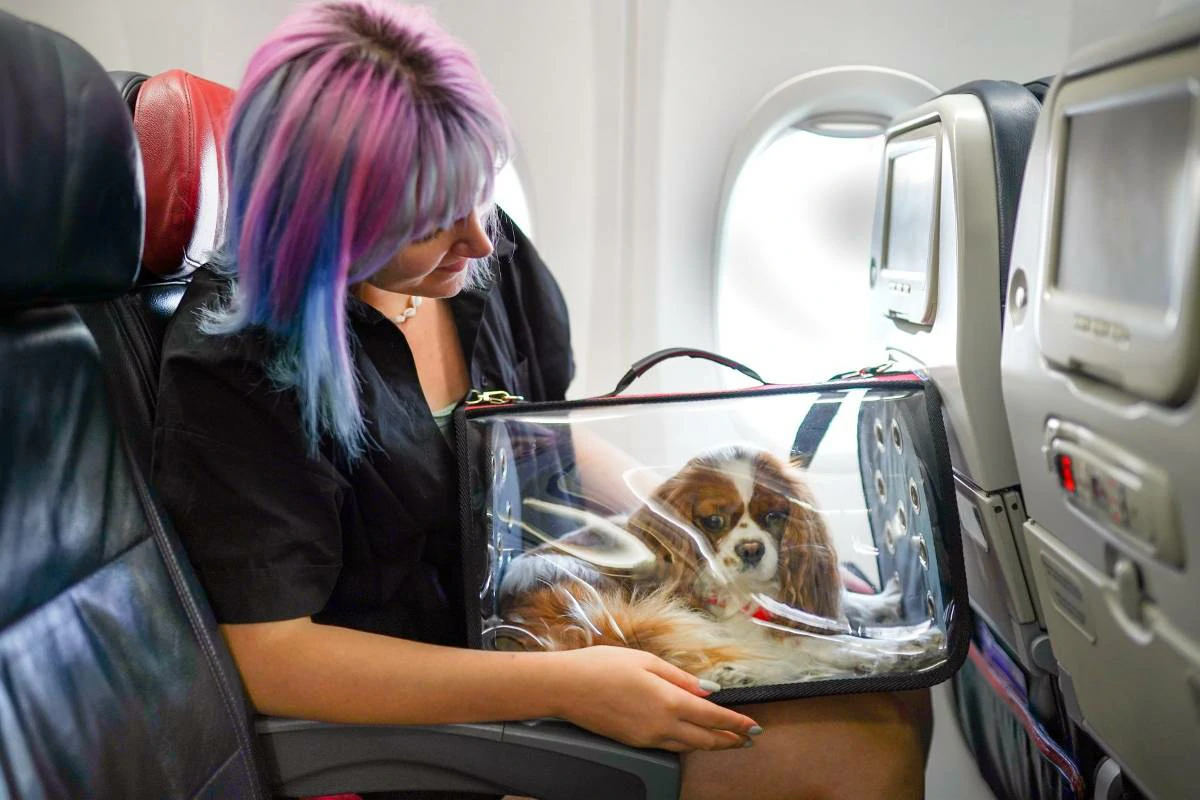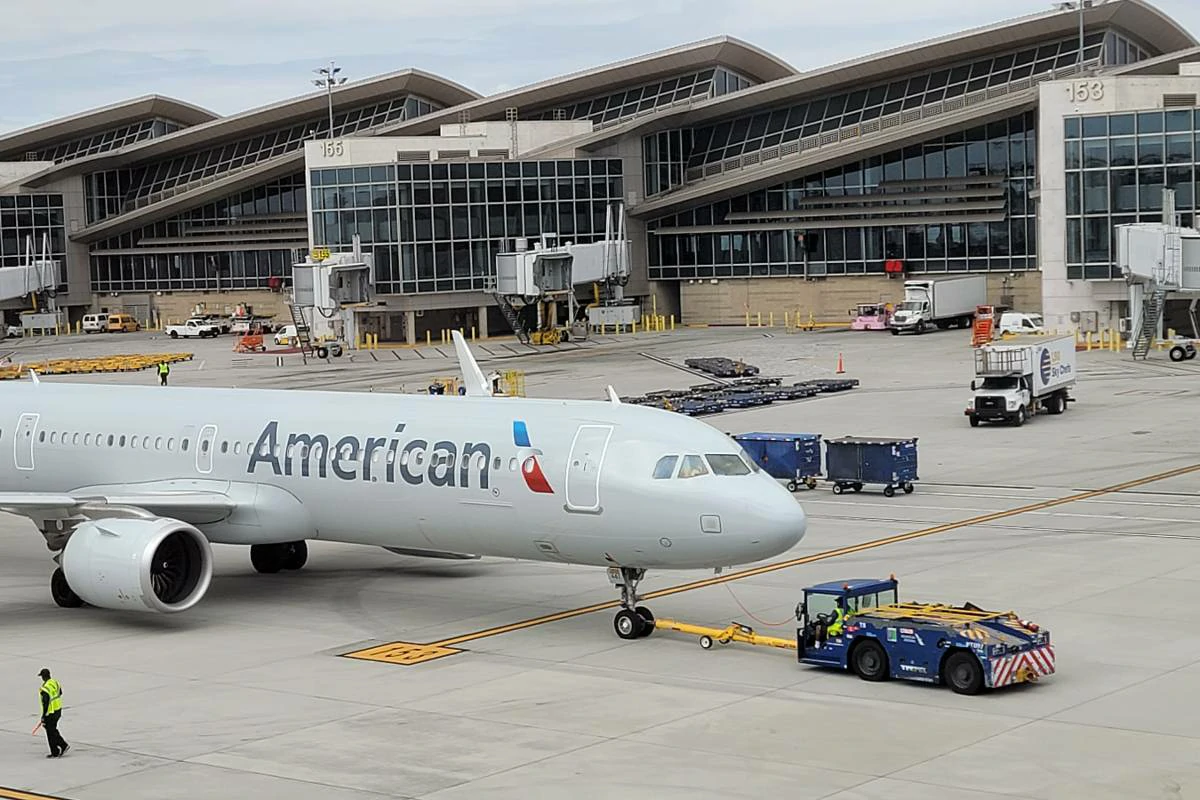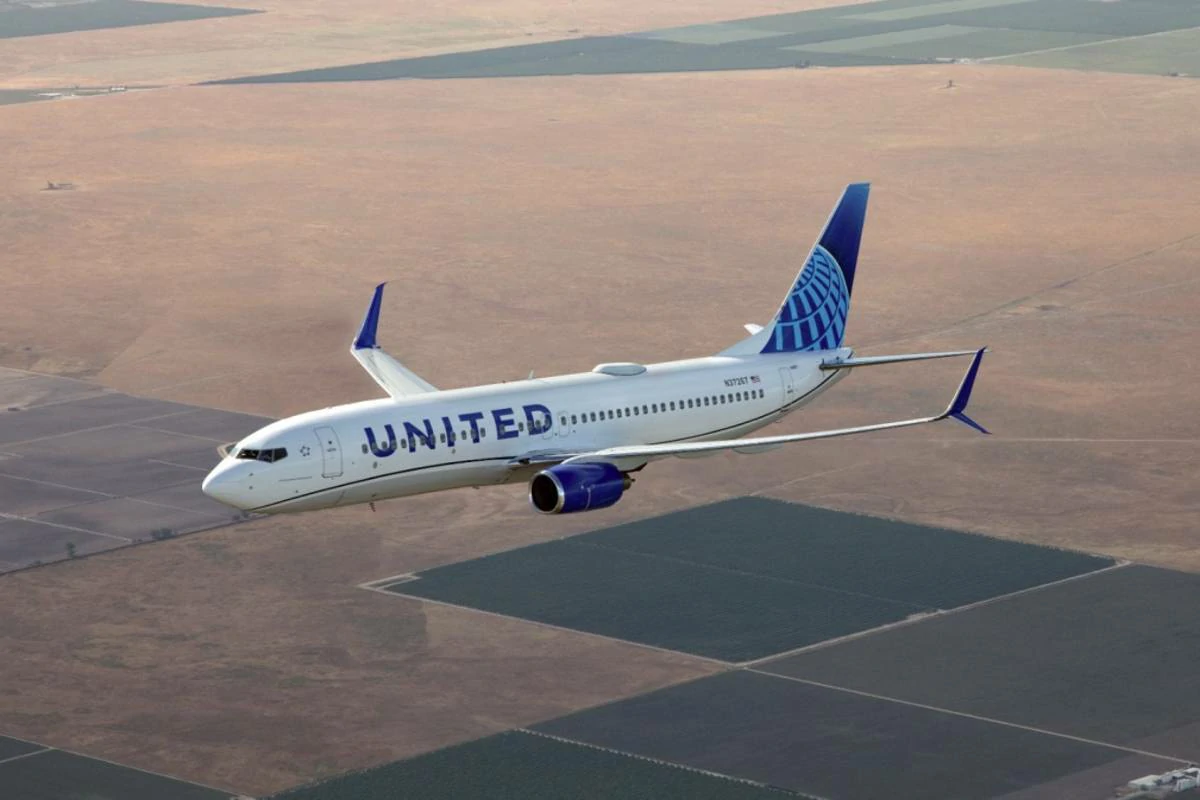What is the name of the new 950-mile train that Mexico recently debuted, and where does it take passengers? Answer is – Mexico recently debuted the first section of a new 950-mile train called the Tren Maya (Maya Train). This train is designed to take passengers to some of the nation’s most beautiful places, showcasing the rich cultural heritage and natural wonders of the region.
Summary
- Mexico unveils the first section of the Tren Maya, a 950-mile train route.
- The train aims to boost tourism and economic development in the southeastern region.
- The Tren Maya will connect popular tourist destinations, archaeological sites, and indigenous communities.
- The project has faced criticism due to environmental concerns and potential impact on local communities.
- The train is expected to offer various service classes, catering to both locals and tourists.
Mexico’s Tren Maya

The Tren Maya, or Maya Train, is a monumental railway project currently under construction in southeastern Mexico. Envisioned as a 1,525-kilometer (948-mile) loop, the train aims to connect five states in the Yucatán Peninsula: Chiapas, Tabasco, Campeche, Yucatán, and Quintana Roo.
This ambitious endeavor has garnered international attention for its potential to reshape tourism, economic development, and cultural preservation in the region.
A Catalyst for Tourism and Economic Growth
According to the Mexican government’s official Tren Maya website, the project is poised to be a driving force for tourism and economic growth in the region.
The train is expected to attract millions of visitors annually, eager to explore the Yucatán Peninsula’s rich cultural heritage and natural wonders.
By linking major tourist destinations, archaeological sites, and indigenous communities, the Tren Maya aims to distribute tourism benefits more equitably and stimulate economic activity in previously underserved areas.
Dr. María Luisa Ramos Rodríguez, a renowned expert on sustainable tourism in Mexico, believes that the Tren Maya holds immense potential for revitalizing the region’s economy. “The train will create jobs, boost local businesses, and encourage investment in infrastructure,” she says. “It will also provide a much-needed transportation link for local residents, making it easier for them to access education, healthcare, and other essential services.”
The Mexican government estimates that the Tren Maya will generate over 715,000 new jobs by 2030 and contribute significantly to the country’s GDP.
This economic impact is expected to be particularly pronounced in the southeastern states, which have historically lagged behind other parts of Mexico in terms of development.
Showcasing Cultural Heritage and Natural Beauty
The Tren Maya is more than just a transportation project; it’s a journey through the heart of Mexico’s rich cultural heritage and natural beauty.
The train will traverse ancient Mayan cities, including Chichen Itza, Palenque, and Tulum, offering passengers a unique opportunity to immerse themselves in the region’s fascinating history.
Additionally, the route will pass through lush jungles, pristine beaches, and vibrant indigenous communities, providing a diverse and enriching travel experience.
Sergio Raúl Arroyo García, a prominent Mexican architect involved in the design of the Tren Maya stations, emphasizes the project’s commitment to showcasing the region’s cultural identity. “The stations are designed to reflect the local architectural traditions and incorporate elements of Mayan art and symbolism,” he explains. “We want the Tren Maya to be a celebration of Mexico’s cultural diversity and a source of pride for the people of the Yucatán Peninsula.”
The Route and Destinations

The Tren Maya route, a 1,525-kilometer (948-mile) loop, promises an unforgettable adventure through the heart of the Yucatán Peninsula. Let’s delve into the route map and explore the major stops and attractions that await eager travelers.
1. Detailed Map of the Tren Maya Route
The Tren Maya route is divided into seven distinct sections, each offering a unique blend of cultural, historical, and natural wonders. You can find a detailed map of the route on the official Tren Maya website.
- Section 1: Palenque (Chiapas) to Escárcega (Campeche)
- Section 2: Escárcega (Campeche) to Calkiní (Campeche)
- Section 3: Calkiní (Campeche) to Izamal (Yucatán)
- Section 4: Izamal (Yucatán) to Cancún (Quintana Roo)
- Section 5: Cancún (Quintana Roo) to Tulum (Quintana Roo)
- Section 6: Tulum (Quintana Roo) to Bacalar (Quintana Roo)
- Section 7: Bacalar (Quintana Roo) to Escárcega (Campeche)
2. Major Stops and Attractions Along the Way
Ancient Mayan Ruins
The Tren Maya provides unparalleled access to some of the most iconic Mayan archaeological sites in the world:
- Chichen Itza: A UNESCO World Heritage Site, Chichen Itza is renowned for its awe-inspiring pyramid, El Castillo, and other well-preserved structures that offer a glimpse into Mayan civilization.
- Palenque: Nestled in the lush rainforest of Chiapas, Palenque boasts impressive temples, palaces, and intricate reliefs that showcase Mayan artistic and architectural achievements.
- Tulum: Perched on a cliff overlooking the turquoise Caribbean Sea, Tulum is a unique walled city that combines ancient ruins with breathtaking coastal scenery.
Colonial Cities
The Tren Maya also stops at charming colonial cities that exude a rich historical ambiance:
- Valladolid: Known for its colorful architecture, vibrant culture, and proximity to cenotes (natural sinkholes), Valladolid offers a delightful blend of history and natural beauty.
- Campeche: A UNESCO World Heritage Site, Campeche boasts a well-preserved historic center with pastel-colored buildings, cobblestone streets, and a formidable sea wall that once protected the city from pirates.
- Mérida: The capital of Yucatán, Mérida is a cultural hub with a vibrant arts scene, delicious cuisine, and numerous historical landmarks, including the impressive Catedral de San Ildefonso.
Natural Wonders
The Tren Maya journey is not complete without experiencing the region’s natural wonders:
- Cenotes:These natural sinkholes, formed by the collapse of limestone bedrock, offer refreshing swimming opportunities and a unique underwater world to explore. Some popular cenotes accessible by the Tren Maya include Ik Kil, Suytun, and Dos Ojos.
- Jungles:The Yucatán Peninsula is home to vast stretches of tropical rainforest teeming with biodiversity. Passengers can disembark at various points along the route to explore these lush ecosystems and encounter exotic wildlife.
- Beaches:The Tren Maya provides convenient access to some of the most beautiful beaches in the Caribbean. Travelers can unwind on the pristine sands of Cancún, Playa del Carmen, and Tulum, or venture to lesser-known coastal gems like Holbox and Mahahual.
Ana García Lascurain Expert Opinion
Ana García Lascurain, a renowned archaeologist specializing in Mayan culture, emphasizes the significance of the Tren Maya for cultural preservation. “The train will not only facilitate access to these ancient sites but also raise awareness about their importance and the need for their protection,” she explains. “By connecting these sites and promoting sustainable tourism, the Tren Maya has the potential to safeguard our cultural heritage for future generations.”
The Tren Maya’s Economic and Social Impact
The Tren Maya isn’t just a transportation project; it’s a catalyst for economic development, job creation, and social change across southeastern Mexico.
The project’s multifaceted impact is poised to transform the region’s economic landscape and uplift local communities.
1. Potential for Economic Development
The Tren Maya is expected to be a powerful engine for economic development in southeastern Mexico, a region that has historically lagged behind other parts of the country. By improving connectivity and accessibility, the train will attract investment, stimulate tourism, and create new business opportunities.
According to a study by the Mexican Institute for Competitiveness (IMCO), the Tren Maya could generate an annual economic impact of $9.1 billion USD and boost the region’s GDP by up to 1.1%. The study highlights the project’s potential to create a positive feedback loop, where increased tourism leads to greater investment, further economic growth, and improved quality of life for local residents.
Carlos Serrano Herrera, chief economist at BBVA Mexico, believes that the Tren Maya will be a game-changer for the region. “The train will unlock the economic potential of southeastern Mexico by connecting it to major markets and providing a reliable transportation link for goods and services,” he says. “This will attract businesses, create jobs, and improve the overall competitiveness of the region.”
2. Job Creation and Infrastructure Improvements
The Tren Maya is a massive infrastructure project that will require a significant workforce during its construction and operation phases. The Mexican government estimates that the project will create over 715,000 new jobs by 2030, providing a much-needed boost to employment in the region.
In addition to direct job creation, the Tren Maya is also expected to stimulate indirect job growth in sectors such as tourism, hospitality, and construction. The project will also require significant investment in infrastructure, including roads, bridges, and utilities, which will further contribute to job creation and economic development.
3. Impact on Local Communities and Indigenous Populations
The Tren Maya’s impact on local communities and indigenous populations is a complex and multifaceted issue. While the project has the potential to bring economic benefits and improved infrastructure to the region, there are also concerns about its impact on the environment, cultural heritage, and social fabric of local communities.
The Mexican government has pledged to mitigate the project’s potential negative impacts through various measures, including environmental impact assessments, social programs, and consultations with local communities.
However, some critics argue that these measures are insufficient and that the project could lead to displacement, environmental degradation, and the erosion of traditional ways of life.
Dr. Mariana Favila Vázquez, a sociologist specializing in indigenous rights, emphasizes the importance of meaningful consultation and participation of local communities in the Tren Maya project. “It’s crucial that the voices of indigenous communities are heard and their concerns are addressed,” she says. “The Tren Maya should be a project that benefits everyone, not just a select few.”
The Tren Maya and Environmental Considerations

The Tren Maya project, while promising economic and social benefits, has also sparked significant environmental concerns and controversies.
Balancing progress with environmental preservation is a complex challenge, and the project’s environmental impact is a subject of ongoing debate.
1. Environmental Impact Assessment (EIA)
Before construction began, the Mexican government conducted an Environmental Impact Assessment (EIA) to evaluate the potential ecological consequences of the Tren Maya.
The EIA identified several areas of concern, including deforestation, habitat fragmentation, and potential harm to endangered species such as jaguars and spider monkeys.
The assessment also highlighted the risk of water pollution and damage to the region’s unique cenote (sinkhole) system.
2. Mitigation Measures
In response to the environmental concerns raised in the EIA and by various stakeholders, the Mexican government has implemented several mitigation measures to minimize the project’s ecological footprint. These measures include:
- Reforestation: Planting trees along the route to offset the loss of vegetation caused by construction.
- Wildlife corridors: Creating underpasses and overpasses to allow animals to safely cross the tracks.
- Cenote protection: Implementing stricter regulations to protect the region’s delicate cenote system from pollution and overuse.
- Archaeological preservation: Conducting archaeological surveys and implementing measures to protect cultural heritage sites along the route.
3. Controversies and Criticisms
Despite the government’s efforts to mitigate the environmental impact, the Tren Maya project has faced significant criticism from environmental groups, scientists, and local communities. Some of the main concerns include:
- Deforestation: The clearing of vast tracts of rainforest for the train’s construction has raised alarms about habitat loss and biodiversity decline.
- Cenote contamination: The project’s proximity to the cenote system has raised concerns about potential water pollution from construction runoff and sewage.
- Insufficient consultation: Some local communities and indigenous groups have complained about a lack of adequate consultation and participation in the decision-making process.
- Alternative routes: Some environmentalists argue that alternative routes with less environmental impact should have been considered.
Dr. Rodrigo Medellín Expert Opinion
Dr. Rodrigo Medellín, a prominent conservation biologist and jaguar expert, has been a vocal critic of the Tren Maya project. He argues that the project’s current trajectory could have devastating consequences for the region’s biodiversity. “The Tren Maya is a threat to the survival of jaguars and other endangered species,” he says. “The government needs to take urgent action to protect these animals and their habitat before it’s too late.”
Train Features and Services
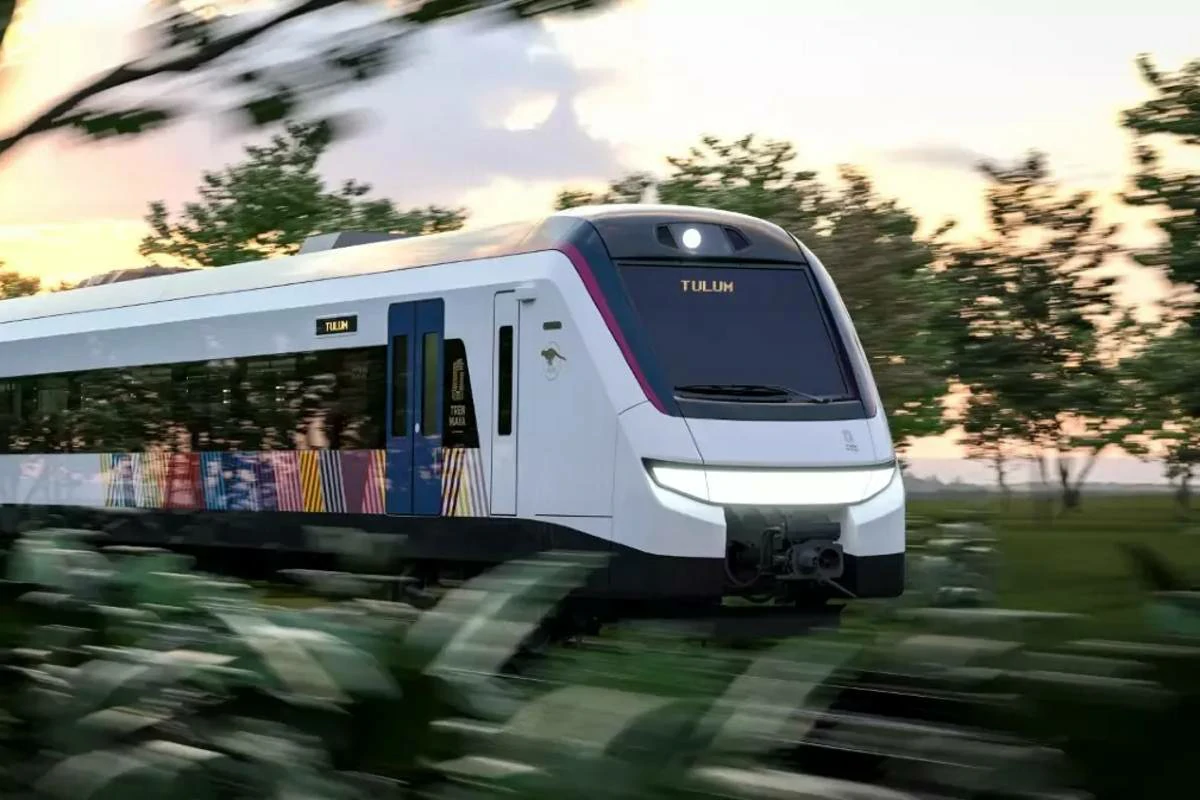
The Tren Maya isn’t just about the journey; it’s about the experience. The train offers a range of services and amenities designed to cater to diverse passenger needs and preferences.
From comfortable seating to onboard dining and accessibility features, the Tren Maya aims to provide a seamless and enjoyable travel experience for all.
1. Service Classes
The Tren Maya is expected to offer three distinct classes of service, each with its own set of features and amenities:
Xiinbal (Standard):This standard class offers comfortable seating with ample legroom and large windows for enjoying the scenic views. Passengers can expect basic amenities such as restrooms, air conditioning, and Wi-Fi.
Janal (Restaurant):This class features a restaurant car where passengers can savor regional cuisine and enjoy a more luxurious dining experience. The Janal class also offers additional amenities such as comfortable lounge areas and premium beverage options.
P’atal (Long Distance): Designed for long-distance travel, this class offers sleeper cabins with comfortable beds, private bathrooms, and other premium amenities. The P’atal class ensures a restful and relaxing journey for those traveling overnight or on extended trips.
2. Onboard Amenities and Facilities
The Tren Maya is equipped with a variety of onboard amenities and facilities to enhance the passenger experience. These include:
Restaurants and Bars: Passengers can enjoy a diverse range of culinary delights at the onboard restaurants and bars, which will showcase regional flavors and ingredients.
Wi-Fi: Stay connected throughout your journey with complimentary Wi-Fi access available in all classes of service.
Restrooms: Clean and well-maintained restrooms are conveniently located throughout the train.
Luggage Storage: Ample storage space is provided for luggage, ensuring a hassle-free travel experience.
Entertainment: Passengers can enjoy a selection of entertainment options, including movies, music, and onboard activities.
3. Accessibility for Passengers with Disabilities
The Tren Maya is committed to providing a comfortable and accessible travel experience for all passengers, including those with disabilities. The train is designed to meet international accessibility standards, with features such as:
- Ramps and Lifts: Facilitating easy access to the train for passengers with mobility impairments.
- Accessible Restrooms: Spacious restrooms equipped with grab bars and other accessibility features.
- Priority Seating: Designated seating areas for passengers with disabilities.
- Assistance from Staff: Trained staff available to provide assistance with boarding, disembarking, and navigating the train.
Adriana Lobo Expert Opinion
Adriana Lobo, a renowned accessibility advocate in Mexico, commends the Tren Maya’s commitment to inclusivity. “The train’s accessibility features are a major step forward in making travel more inclusive for people with disabilities,” she says. “This will not only benefit individuals but also contribute to the overall growth and development of the tourism industry in the region.”
Embarking on the Tren Maya is an exciting prospect, and securing your tickets is the first step towards this unforgettable adventure. Let’s delve into the ticket pricing, booking process, and available discounts, ensuring a smooth and informed start to your journey.
Ticket Prices for Different Routes and Classes
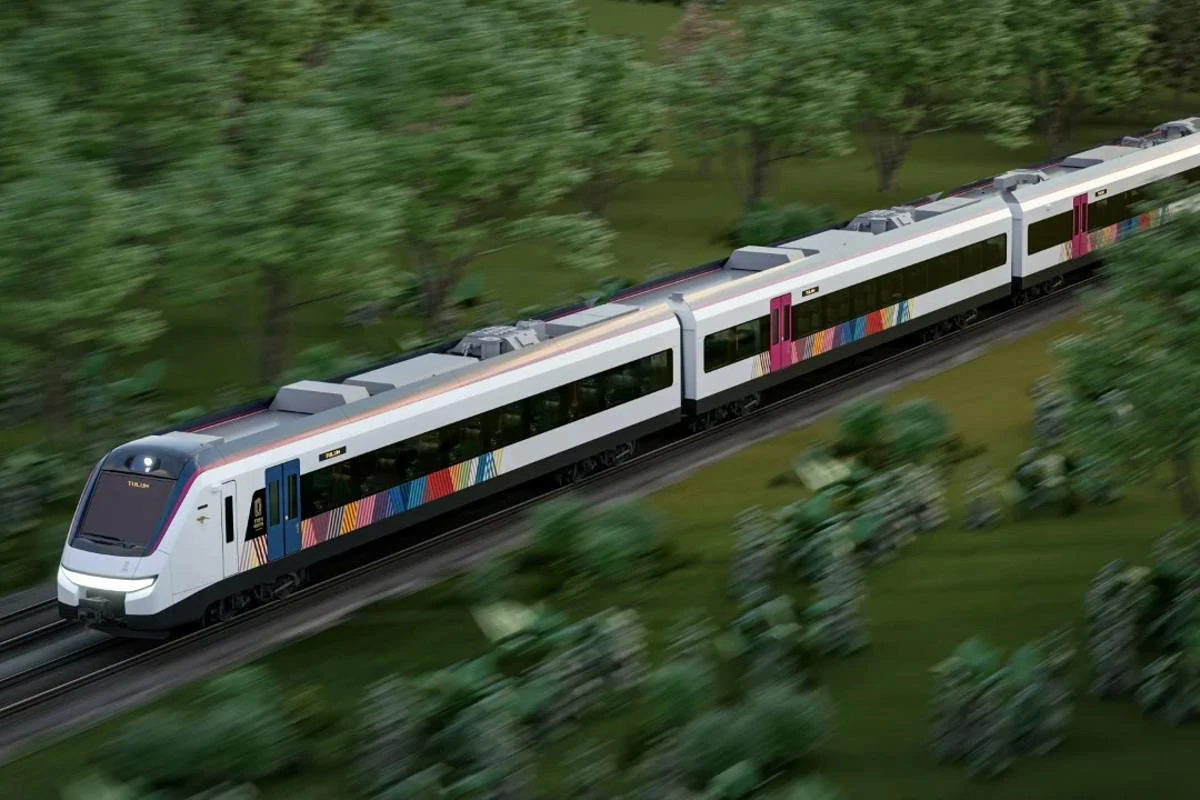
The Tren Maya offers a range of ticket options to suit various budgets and travel preferences. Ticket prices vary depending on the chosen route, class of service, and travel dates.
Currently, ticket sales are focused on the initial route, but as the project expands, additional routes and pricing details will be released.
On the website, you’ll find detailed information about the different service classes – Xiinbal (Standard), Janal (Restaurant), and P’atal (Long Distance) – and their respective features. This will help you choose the class that best suits your needs and budget.
1. How to Book Tickets
Booking your Tren Maya tickets is a straightforward process, with several convenient options available:
Online Booking: The official Tren Maya website provides a user-friendly online booking platform where you can select your desired route, class, and travel dates. This platform allows you to securely purchase your tickets from the comfort of your own home.
Authorized Agents: The Tren Maya has partnered with various authorized travel agencies and ticket vendors throughout the region. You can visit these agencies in person to purchase your tickets and receive personalized assistance with your travel plans.
Ticket Offices at Stations: Once the Tren Maya is fully operational, you’ll be able to purchase tickets directly at the train stations. This option is ideal for spontaneous travelers or those who prefer to buy their tickets in person.
2. Discounts for Students, Seniors, and Families
The Tren Maya aims to make travel accessible to everyone, and to that end, it offers various discounts for specific groups of passengers:
- Students: Students with valid identification can often enjoy discounted fares on the Tren Maya.
- Seniors: Senior citizens are typically eligible for reduced ticket prices.
- Families: The Tren Maya may offer special family packages or discounts for groups traveling together.
To inquire about specific discounts and eligibility requirements, it’s best to contact the official Tren Maya customer service or visit their website for the latest information.
José Luis Rangel Expert Tip
José Luis Rangel, a seasoned travel advisor specializing in Mexican train journeys, advises booking your Tren Maya tickets well in advance, especially during peak travel seasons. “The Tren Maya is expected to be a popular attraction, so securing your tickets early will ensure you don’t miss out on your desired travel dates,” he says.
Safety and Security Measures on the Tren Maya
The Tren Maya is committed to providing a safe and secure travel experience for all passengers and staff. A comprehensive set of safety protocols, security measures, and emergency procedures have been implemented to ensure the well-being of everyone on board.
1. Safety Protocols
The Tren Maya adheres to rigorous safety standards in line with international best practices. These protocols encompass various aspects of train operation and maintenance, including:
Regular Inspections: The trains undergo regular and thorough inspections to ensure that all systems are functioning optimally and meet safety requirements.
Trained Personnel: The train crew and staff receive extensive training in safety procedures, emergency response, and customer service.
Track Maintenance: The tracks are regularly inspected and maintained to ensure smooth and safe operation.
Speed Limits: Speed limits are strictly enforced to prevent accidents and ensure passenger safety.
Signaling Systems: Modern signaling systems are in place to manage train movements, prevent collisions, and maintain safe distances between trains.
Fire Safety: The trains are equipped with fire detection and suppression systems, and staff are trained in fire safety procedures.
2. Security Measures
The Tren Maya prioritizes the security of passengers and staff through a multi-layered approach:
Surveillance Systems: The trains and stations are equipped with surveillance cameras to monitor activity and deter potential threats.
Security Personnel: Trained security personnel are present on the trains and at stations to maintain order and respond to any security incidents.
Baggage Screening: Passengers’ baggage may be subject to screening to prevent the transport of prohibited items.
Emergency Communication: Passengers and staff have access to emergency communication systems to report any suspicious activity or request assistance.
Collaboration with Authorities: The Tren Maya collaborates with local and national law enforcement agencies to ensure a safe and secure travel environment.
3. Emergency Procedures and Communication Systems
In the event of an emergency, the Tren Maya has well-defined procedures in place to ensure the safety and well-being of passengers and staff. These procedures include:
Evacuation Plans: Clearly defined evacuation plans are in place for each train and station, outlining the safest routes and procedures for exiting the train in case of an emergency.
Emergency Communication: Passengers and staff have access to emergency communication systems, such as intercoms and emergency call buttons, to alert the crew of any issues or request assistance.
First Aid: Trained staff are available to provide first aid in case of injuries or medical emergencies.
Collaboration with Emergency Services: The Tren Maya maintains close communication and coordination with local emergency services, such as police, fire departments, and medical responders, to ensure a swift and effective response to any emergency situation.
David Hernández Expert Opinion
David Hernández, a security consultant with extensive experience in transportation safety, commends the Tren Maya’s comprehensive approach to safety and security. “The Tren Maya has implemented a robust set of measures to ensure the safety and security of its passengers and staff,” he says. “The combination of advanced technology, trained personnel, and well-defined procedures creates a safe and reliable travel environment.”
Future Developments and Expansions
The Tren Maya is not just a present-day marvel; it’s a project with a vision for the future. As the initial sections of the railway become operational, plans for expansion and integration are already underway, promising a broader network of connectivity and enhanced travel experiences across Mexico.
1. Planned Extensions of the Tren Maya Route
The Tren Maya’s current route is just the beginning. The Mexican government has ambitious plans to extend the railway, reaching new destinations and further boosting tourism and economic development in the region.
One notable extension is the proposed connection to the new Felipe Ángeles International Airport (AIFA) in Mexico City. This would significantly enhance the Tren Maya’s accessibility, allowing passengers to seamlessly travel between the capital city and the Yucatán Peninsula.
2. Potential for Additional Stations and Attractions
As the Tren Maya expands, so too does the potential for new stations and attractions along the route. These additions could include:
Eco-tourism destinations: The Tren Maya could facilitate access to remote natural areas, promoting eco-tourism and supporting conservation efforts.
Cultural centers: New stations could be developed as cultural hubs, showcasing local arts, crafts, and traditions.
Theme parks: The railway could spur the development of entertainment complexes and theme parks, attracting a wider range of tourists.
Fernando Mandri Bellot, Director General of the National Fund for Tourism Development (FONATUR), the agency overseeing the Tren Maya project, highlights the project’s potential for diversifying tourism offerings. “The Tren Maya will not only connect existing attractions but also create new ones,” he says. “We envision the railway as a catalyst for the development of a vibrant and sustainable tourism corridor across the Yucatán Peninsula.”
3. Integration with Other Transportation Networks
The Tren Maya is not just a standalone project; it’s envisioned as a key component of Mexico’s broader transportation network. There are plans to integrate the railway with other modes of transportation, including airports, buses, and local transit systems, to create a seamless and convenient travel experience for passengers.
For example, the Tren Maya stations are designed to be intermodal hubs, allowing for easy transfers between trains, buses, and taxis. This integration will not only benefit tourists but also local residents who rely on public transportation for their daily commutes.
The Tren Maya isn’t just a train ride; it’s an immersive experience that evokes a symphony of emotions and paints vivid memories in the minds of its passengers. To truly understand the magic of this journey, we turn to the voices of those who have embarked on this unique adventure.
The Tren Maya Experience: Passenger Testimonials
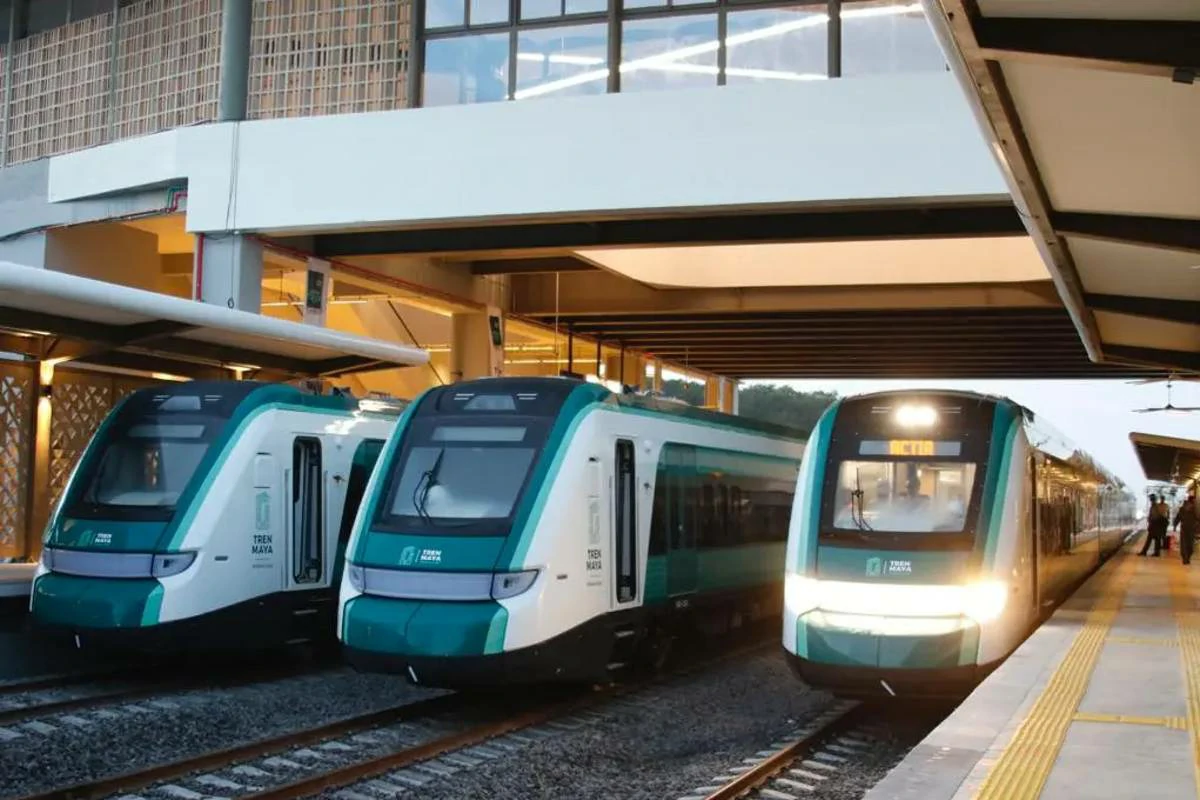
Elena Ramirez, history enthusiast: “Riding the Tren Maya was like stepping back in time. The views of the ancient ruins were breathtaking, and the onboard commentary provided fascinating insights into Mayan history and culture.”
Carlos Mendoza, nature lover:“The train journey through the jungle was a highlight for me. The lush greenery and diverse wildlife were a feast for the eyes. I also loved swimming in the crystal-clear waters of a cenote near one of the stops.”
Sofia González, family traveler: “The Tren Maya was a perfect way to explore the Yucatán Peninsula with my family. The kids loved the onboard activities, and we all enjoyed the comfortable seating and delicious food. It was a truly memorable experience.”
Photos and Videos Showcasing the Train’s Interiors and Views
The Tren Maya’s official Instagram account and other social media platforms are treasure troves of photos and videos showcasing the train’s modern interiors, panoramic windows offering stunning views, and glimpses of the diverse landscapes it traverses.
These visuals provide a virtual preview of the Tren Maya experience, enticing travelers to embark on this remarkable journey.
Conclusion
The Tren Maya is more than just a transportation project; it’s a transformative journey that weaves together history, culture, and natural beauty. Through the eyes and voices of its passengers, we gain a deeper appreciation for the train’s impact on tourism, economic development, and cultural preservation in southeastern Mexico.
While the project has faced its share of challenges and controversies, the Tren Maya’s potential to create lasting benefits for the region is undeniable. As the railway continues to expand and evolve, it will undoubtedly leave an enduring mark on the landscape and the lives of those it touches.
FAQs
1. What are the environmental concerns associated with the Tren Maya project?
The Tren Maya has raised environmental concerns primarily related to deforestation, potential harm to endangered species, and the risk of pollution to the region’s unique cenote system. However, the government has implemented various mitigation measures, such as reforestation efforts, wildlife corridors, and cenote protection initiatives, to minimize the project’s ecological footprint.
2. How will the Tren Maya benefit local communities and indigenous populations?
The Tren Maya aims to bring socioeconomic benefits to local communities and indigenous populations through job creation, improved infrastructure, and increased tourism revenue. The project is expected to generate over 715,000 new jobs and stimulate economic activity in previously underserved areas.
3. What are the different ticket options and prices for the Tren Maya?
The Tren Maya is expected to offer three classes of service – Xiinbal (Standard), Janal (Restaurant), and P’atal (Long Distance) – each with varying amenities and price points. Ticket prices will also depend on the chosen route and travel dates.
4. What safety measures are in place to ensure passenger security on the train?
The Tren Maya prioritizes passenger safety through a combination of regular inspections, trained personnel, track maintenance, speed limits, modern signaling systems, fire safety measures, surveillance systems, security personnel, baggage screening, emergency communication, and collaboration with law enforcement agencies.
5. What are some of the most popular attractions that can be reached by the Tren Maya?
The Tren Maya offers access to a plethora of attractions, including iconic Mayan ruins like Chichen Itza, Palenque, and Tulum, colonial cities such as Valladolid, Campeche, and Mérida, and natural wonders like cenotes, jungles, and beaches.
6. What are the opinions of local residents and businesses about the Tren Maya project?
Opinions about the Tren Maya vary among local residents and businesses. While many welcome the potential economic benefits and improved infrastructure, others have expressed concerns about the project’s environmental impact and potential disruption to local communities.
7. How does the Tren Maya compare to other train journeys around the world?
The Tren Maya offers a unique blend of cultural immersion, historical exploration, and natural beauty, setting it apart from many other train journeys. While it may not boast the same level of luxury as some European or Asian trains, it offers an authentic and enriching experience that showcases the diverse landscapes and cultural heritage of southeastern Mexico.
8. What is the projected economic impact of the Tren Maya on Mexico’s tourism industry?
The Tren Maya is expected to have a significant positive impact on Mexico’s tourism industry, attracting millions of visitors annually and generating billions of dollars in revenue. The project is also expected to create a ripple effect, stimulating economic activity in various sectors and creating new jobs.
9. How will the Tren Maya contribute to the preservation of cultural heritage sites in the region?
The Tren Maya aims to contribute to the preservation of cultural heritage sites by facilitating access, raising awareness, and promoting sustainable tourism practices. The project also includes archaeological surveys and conservation efforts to protect these invaluable historical treasures.
10. What are the long-term goals and vision for the Tren Maya project?
The long-term vision for the Tren Maya is to create a sustainable and integrated transportation network that fosters economic development, social well-being, and environmental preservation in southeastern Mexico. The project aims to become a model for responsible tourism and infrastructure development, showcasing the region’s rich cultural heritage and natural beauty while minimizing its environmental impact.

